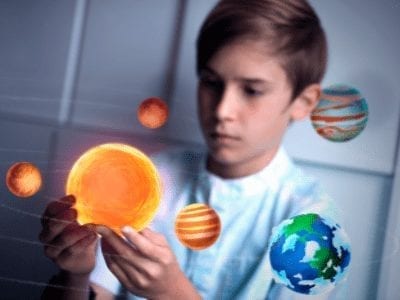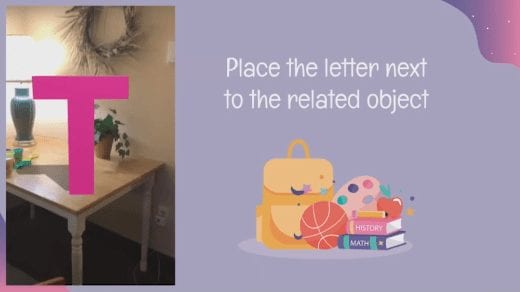Bringing Augmented Reality into the Classroom
Augmented Reality, or AR, is described by Jaime Donally in a recent edWebinar as a “digital layer in our real world that gives an illusion that it exists in our space.” She highlights that it is an exciting time, as emerging technologies associated with AR are feeling much more realistic. AR software such as Google Maps allows the viewer to have guidance as they are walking in a new area, and AR embedded browsers can display 3D animated objects in real-life environments. The key to giving students opportunities to engage in augmented reality begins with supporting teachers as they enhance learning experiences for students. Using AR software and tools such as 3DBear and MERGE, teachers have access to an abundance of activities and lesson plans that offer more in-depth content, provide opportunities for collaboration and exploration, and expand students learning experiences outside of classroom walls.
3DBear:
For kindergarten students, Augmented Alphabet is a lesson that is effective for teaching letter-sound relationships. Using mobile devices such as tablets and iPads, students use augmented reality to demonstrate the letter-sound connection with reflection sheets and interactive activities. Teachers can evaluate students through the students’ ability to respond, react, and explain what they have completed and accomplished.
The AR lesson The Mars Pioneer creates scenarios where students investigate and analyze what is needed to build a colony that can survive on Mars. Students compare both the Earth’s and Mars’ environmental needs, such as air, food, water, energy, supply, transportation, and communication. Students can capture their images and videos within 3DBear to share and describe the space to other students and their teachers.
MERGE:
Students explore Earth as a system through a standards-based AR lesson called Terraforming Earth. Students traverse the layers of the Earth as they hold and interact with each layer, toggling the layers on and off to get a closer view. They answer questions such as what are tectonic plates and how the plates move and what happens when they do move. This interactive experience with augmented reality expands learning beyond just hearing, reading, and viewing to exploratory opportunities where students make learning connections to Earth as a system.
The Egyptian History lesson takes creating and building 3D objects to that next level. Building an AR museum collection, students locate 3D Egyptian objects and collaborate with other students to research and understand their historical significance. Using the MERGE Object Viewer, surreal learning experiences are possible as the 3D Egyptian artifacts students create come to life in their hands.
This edWeb broadcast was co-sponsored by 3DBear and MERGE.
This article was modified and published by eSchool News.
About the Presenter
Jaime Donally is a passionate technology enthusiast. She began her career as a math teacher and later moved into instructional technology. Her desire to build relationships has brought about opportunities to collaborate with students and educators around the world. She provides staff development and training on immersive technology as an edtech consultant. Her latest adventures include the launch of Global Maker Day and the #ARVRinEDU community. She works as an author and speaker to provide practical use of augmented and virtual reality with more resources at ARVRinEDU.com.
Join the Community
STEM Learning: Full STEAM Ahead is a free professional learning community on edWeb.net that provides educators, curriculum leaders, and industry members with a place to collaborate on bringing more science, technology, engineering, and mathematics into the classroom.







Comments are closed.